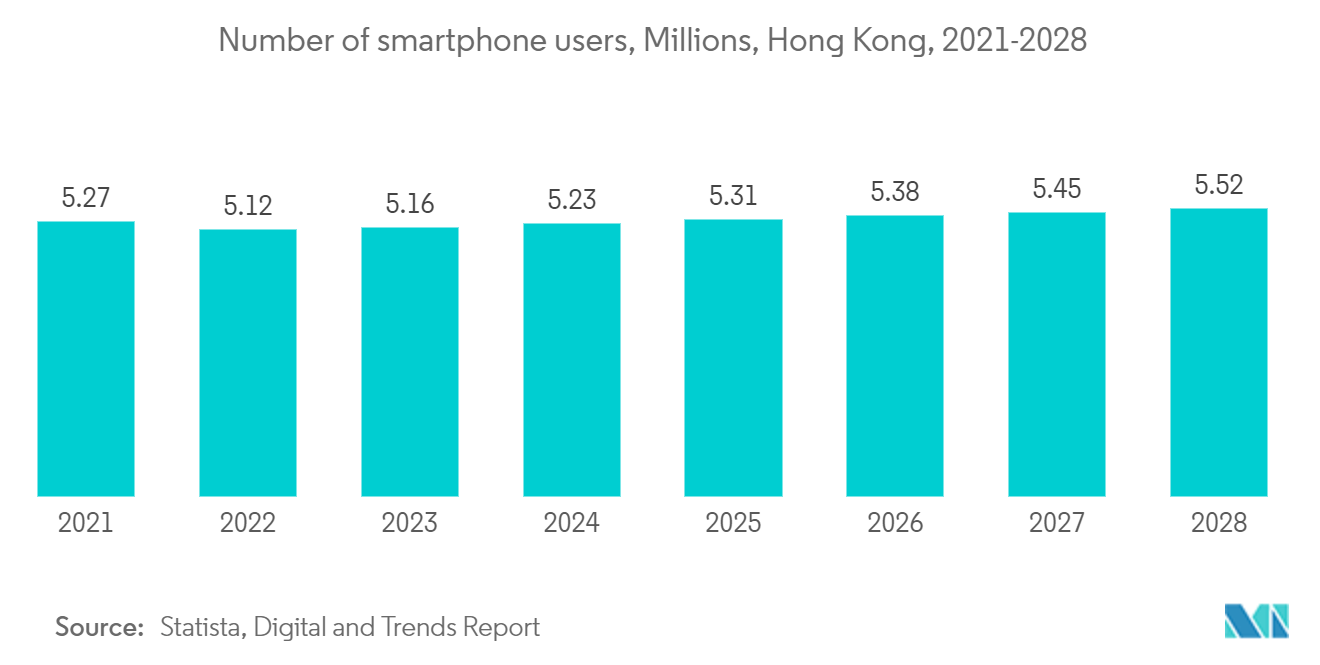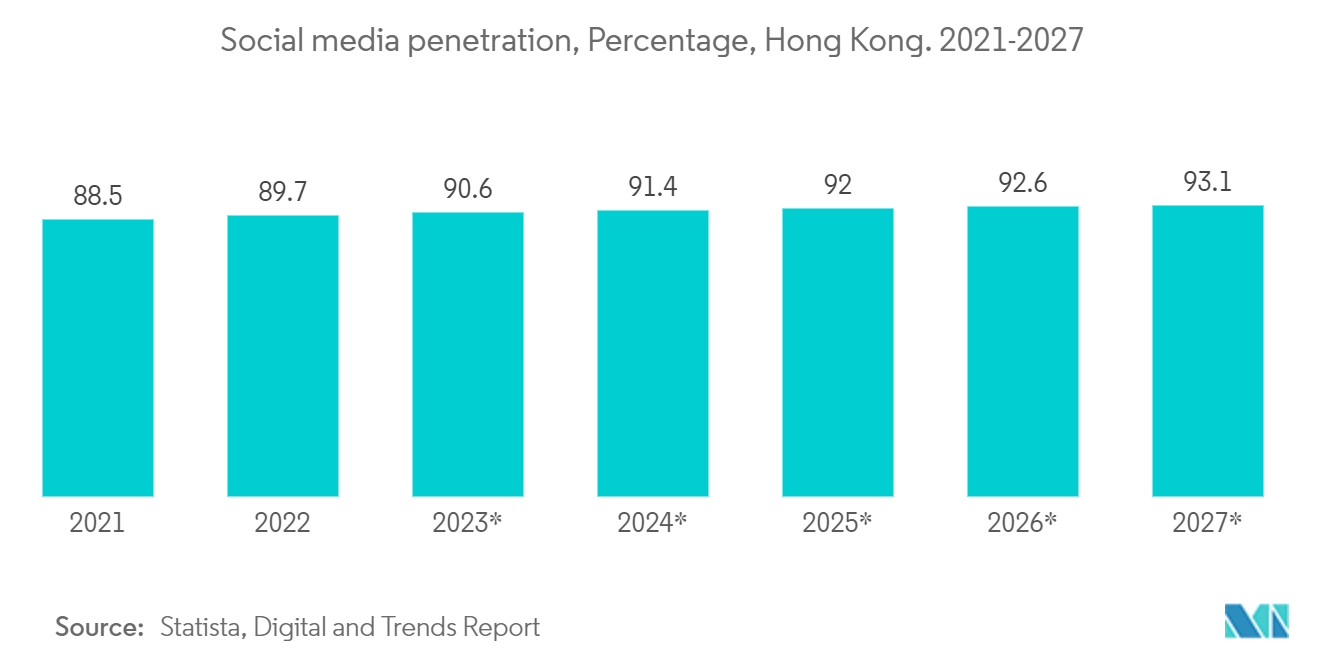Market Trends of Hong Kong Data Center Server Industry
IT & Telecommunication Segment To Hold A Major Share In The Market
- The demand for the cloud segment is expected to increase with the growing demand for analytics, visualization tools, and business services.
- With 5G being introduced in the country, high bandwidth speed offers led to users opting for multiple smart devices, such as smart wearables, tablets, security systems, smart lighting, and others, which have catalyzed the demand for these devices. Around 96% of the population in Hong Kong currently uses smartphones to access the Internet on a daily basis.
- To meet the surplus demand, automation has to be introduced in the industry as per Industry 4.0 measures. Increasing demand for streaming services, financial services, and smart home automation applications is expected to further catalyze data consumption.
- The increasing number of users of smart devices, such as smartphones and tablets, using varying services such as streaming, browsing, and playing games has led to consumers opting for 4G services, thus diminishing the 3G service market over the years. The implementation of 5G is expected to further increase the data speed with the evolving technology over the years, which is expected to cater to the demand as more industries adopt automation in their companies in the manufacturing sector. Such improvements in the market are expected to create more demand for data center servers in the coming years.
- The Minister of Posts and Telecommunications announced the ministry's plans to connect 2,715 kilometers of submarine fiber optic cable network from Hong Kong to Preah Sihanouk. The project was initiated in 2022 and will be completed by 2024. Considering the above instances, the fiber connectivity network will grow further during the forecast period and creates more requirement for data storage servers.

Blade Servers To Grow At aA Faster Pace In The Coming Years
- Blade servers are designed to save space in data centers. Multiple blade servers can be housed in a single chassis, reducing the physical footprint required for your servers.
- Blade server chassis are typically designed with efficient cooling mechanisms, which can help maintain a consistent temperature in the data center and reduce cooling costs.
- Blade servers often come with integrated management tools that allow for centralized control and monitoring of all servers within the chassis.
- The growing adoption of technologies such as cloud computing, artificial intelligence (AI), IT services, Internet penetration, and social media users by businesses are propelling the use of servers in data centers.
- Blade servers are generally designed with energy efficiency in mind, helping to reduce power consumption and operational costs.


